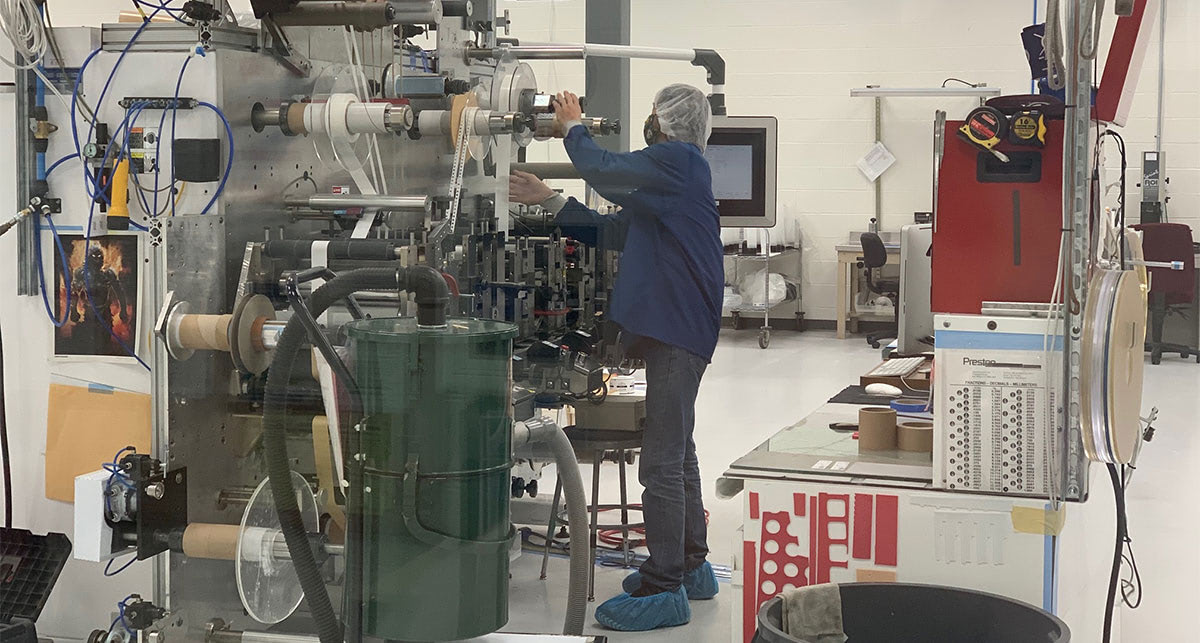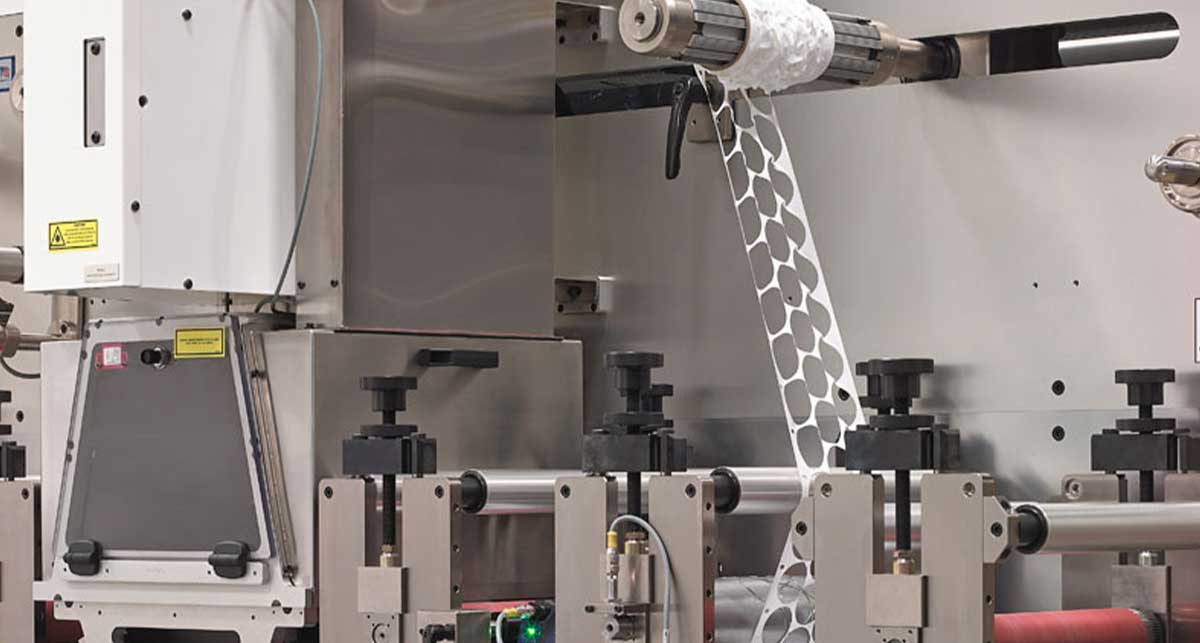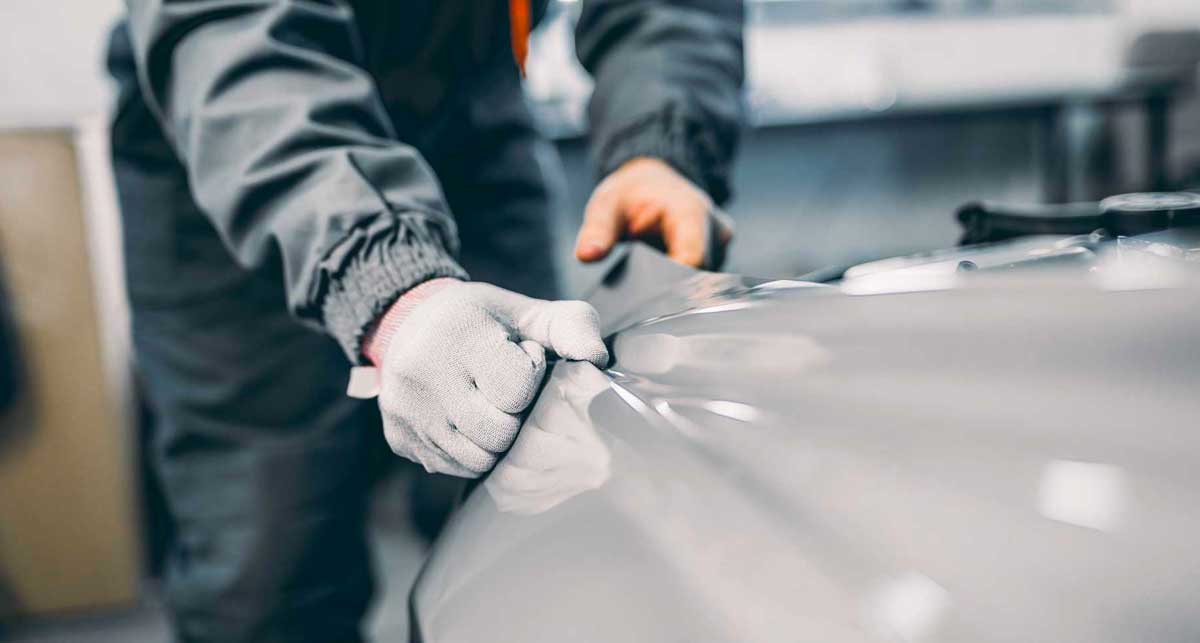Did you know that electric car batteries could be held together by tape?
Tapes are vital in reducing the weight and improving the safety of modern electric vehicles. Yet, you might not realize that many of these tapes actually improve the battery’s thermal management.
At Strouse, companies often approach us to build new electric vehicle components requiring thermal management. Thanks to our manufacturing experience, we can suggest different types of EV tapes and optimize the design for the intended part application.
If you’re interested in improving battery pack thermal management in EVs, buckle up to learn how manufacturers use tape to improve the safety of their EV batteries.
WHAT IS BATTERY PACK THERMAL MANAGEMENT?
By now, you’ve probably witnessed videos of electric vehicles going up in flames; this phenomenon is caused by thermal runaway.
One hazard of owning an EV is the risk of the battery overheating, catching fire, and spreading throughout the rest of the vehicle. Thermal management reduces the chances of thermal runaway in EV batteries by addressing risk areas.
4 Ways Manufacturers Use Tape in Battery Thermal Management
Whether you choose foam insulation for heat or sound deadening, tape can serve many purposes within electric vehicles. By incorporating specialized tapes into your design, you can reduce the battery flammability risk.
Let’s talk about how you might use tape for EV thermal management.
1. SAFETY IMPROVEMENTS
As previously mentioned, one of the most significant topics in electric car safety is reducing the risk of thermal runaway. When designing an EV battery pack, you’re simultaneously factoring in many safety goals:
- Providing cushioning
- Sealing out dirt and water
- Sealing out excess heat
Designs prioritizing thermal management use multipurpose materials with sealing AND cushioning abilities to contain heat and provide more structural stability.
2. THERMAL CONTROL
Sudden changes in operating temperature ranges can lead to unequal heat distribution throughout the battery. This is the primary issue regarding heat control in electric vehicles.
Over the years, automotive companies have improved safety by using high-temp-resistant materials like acrylic foam tape to bond components and achieve better thermal management in their designs.
The 2019 fire rate of newly made electric passenger vehicles was 0.34 per 10,000 units; within a year, it fell to 0.18 per 10,000 units, demonstrating marked thermal safety improvements.
High-bondage adhesives serve as strong seals that bond substrates while safely containing heat by joining an EV battery's inner and outer components to reduce gaps.
In addition, insulating the battery from outside temperatures will help prevent sudden changes that might have extreme consequences on the rest of the vehicle.
3. DIELECTRIC PROTECTION
Proper electrical insulation is a crucial component of EV battery pack functionality, and wrapping certain areas of the battery with tape can help to reduce arcing and other issues.
Electrical currents flowing irregularly to the module or sides of a battery pack can cause overheating. Dielectric insulators protect the battery cells from the effects that may arise when running high-voltage battery packs.
Placing dielectric tapes and insulators on individual cells or using them to attach conductive pathways such as busbars can help control the electric current, thereby mitigating the chance of overheating.
The adhesive tape effectively supports dielectric strength because it’s fast to apply and uniform in conductivity, but you’ll want to keep the geometric limitations in mind to ensure your chosen shape fits properly.
Depending on the placement, you may seek conformable dielectric tape, which uses a thick liner that allows it to be easily cut and converted.
4. BATTERY PACK CUSHIONING
Vehicles hit curbs, potholes, and sometimes even other vehicles. At the end of the day, nobody wants a minor accident to become a colossal vehicle failure due to insufficient protection measures.
Adhesive foam tape or pads are cushions that hold cells in place to prevent collision or vibration damage. These thermal gap pads wedge outside the battery or between the cells.
Any harm to a battery cell can hurt design functionality, and cushioning protection for the battery pack reduces it to avoid triggering extreme thermal reactions.
Developing a Design for Battery Pack Thermal Management
Are you developing components to assist the thermal management of your electric vehicles?
Designing an EV battery setup can be challenging, but with the right expertise, you can create and produce components to increase your vehicle's safety and effectiveness.
Whether it’s cell-to-cell bonding, compression pads, or another design you’re developing, Strouse’s team of experts will help you get started once you fill out the form for a project consultation.
Otherwise, you can learn more about manufacturing parts for EV batteries in our Learning Center.
Originally published: September 18, 2023







